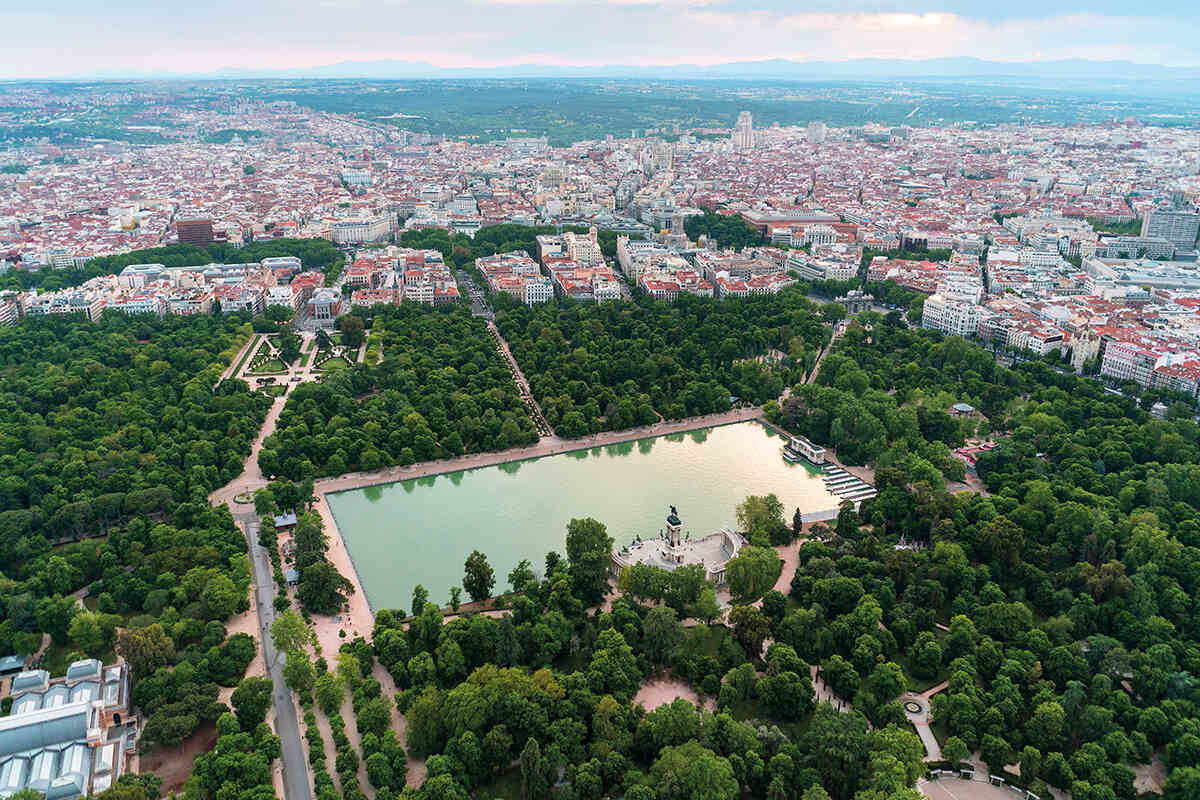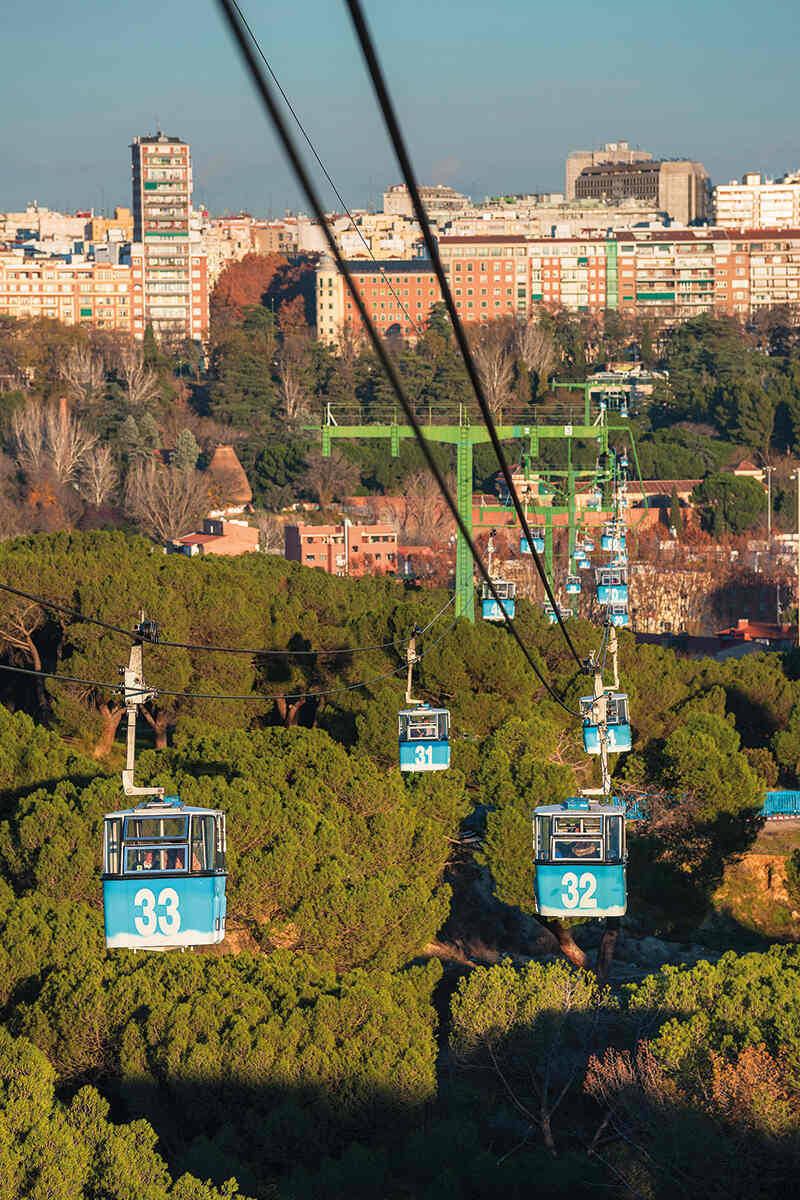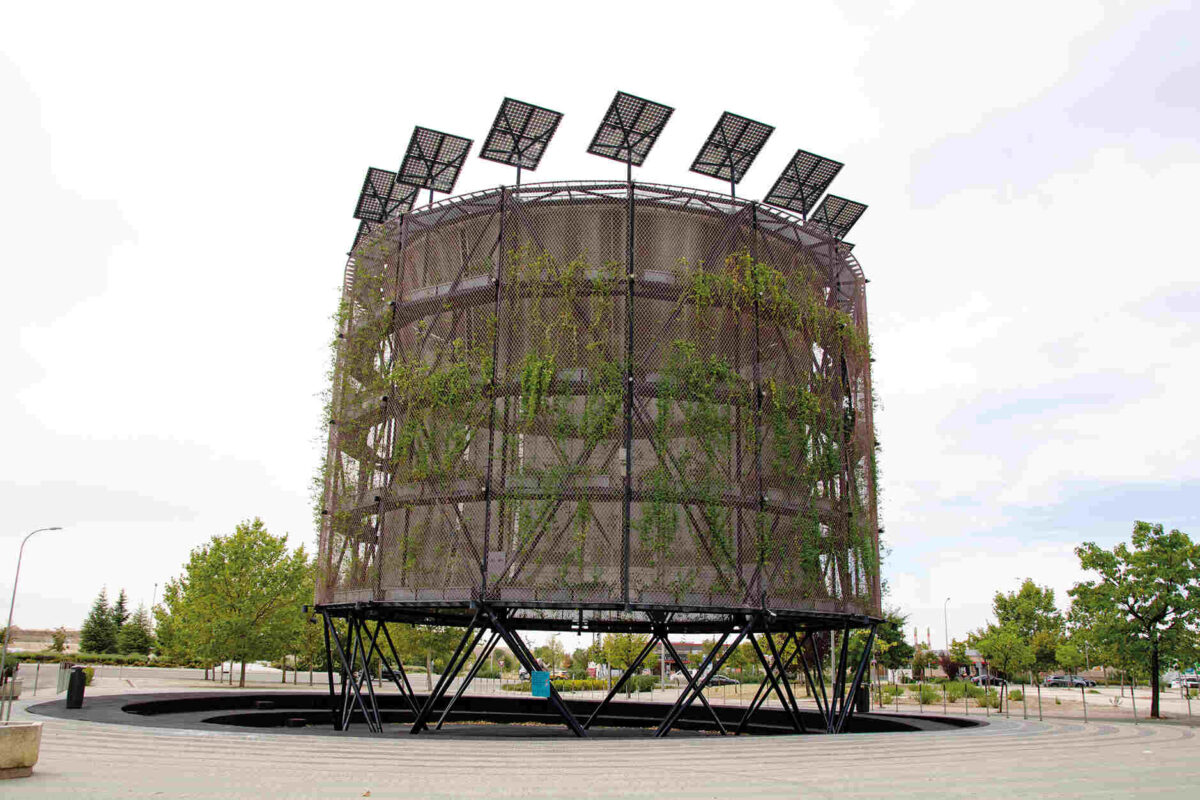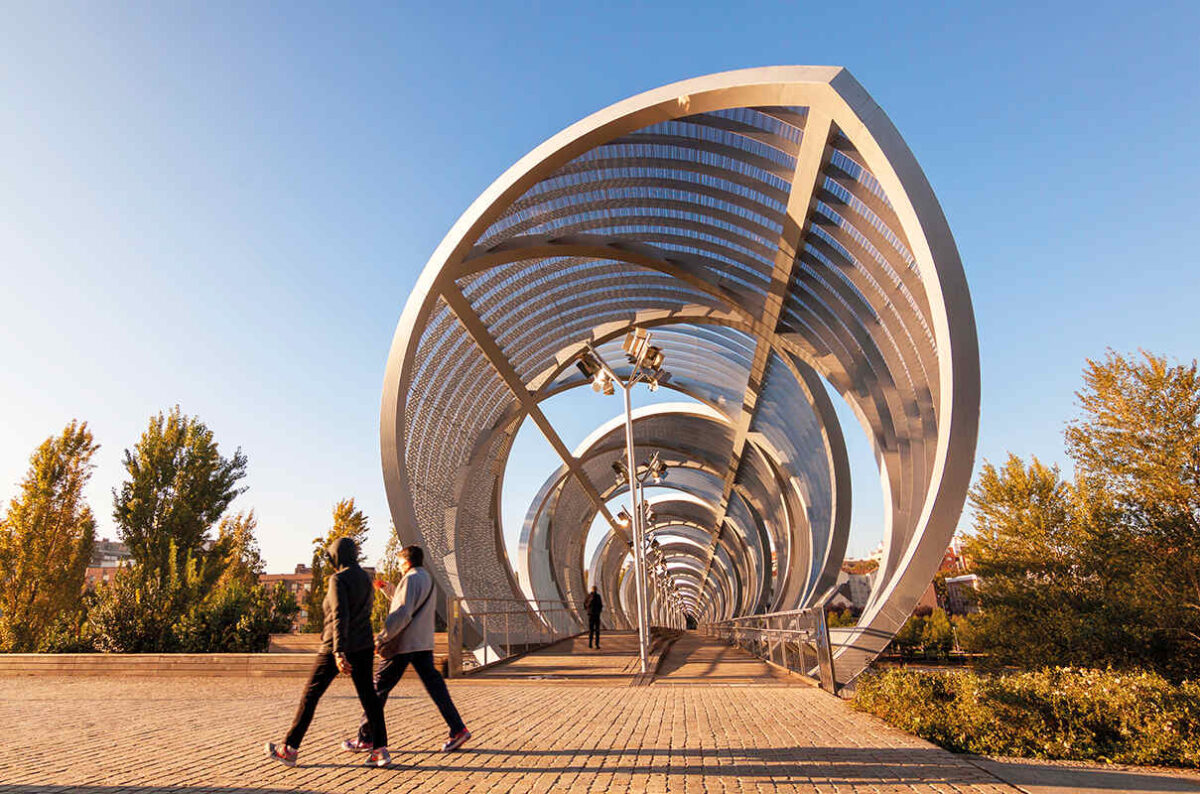
Politicians in Spain’s capital decided to ask their children what sort of city they wanted to grow up in – the resounding answer was a green one
By
In 1561, King Philip II of Spain moved his capital from Toledo to Madrid. In doing so, the dour Habsburg monarch unwittingly touched off a dramatic change in climate that more than 550 years later continues to have an impact on the city’s environment.
There’s an abundance of speculation about the motives behind Philip’s historic decree. Toledo’s population had grown to a point that made it increasingly difficult to supply water for the city’s daily needs. The main source of water was a gorge above the Tagus River that required a steady relay of servants to bring up buckets. Madrid, on the other hand, had an abundance of streams and it adjoins the Manzanares River. This is what drew the early Moorish settlers, who built a fortification in what they called Magerit, or ‘place of water’.
The king is also believed to have been seeking a healthier environment for his third wife, the frail Elisabeth of Valois, who suffered from smallpox. During the 16th century, Madrid enjoyed more benign weather patterns than Toledo. If this was the king’s rationale for the move, it failed to bring the desired results. Elisabeth died in 1568 at the age of 23.
Philip had no-one but himself to blame for the severe change in climate that Madrid suffered after it became the seat of power. Before the arrival of thousands of troops, courtiers and their families, the city had been surrounded by woodlands that offered shelter from the icy winter winds of the Guadarrama range to the north and the searing heat that blanketed the Castilian plateau in summer. Most of these woodlands were chopped down to provide timber for housing and firewood for the royal court, exposing the capital to the region’s extreme elements and giving rise to the maxim nueve meses de invierno y tres de infierno (‘nine months of winter and three of hell’).

Spain’s capital has been at the mercy of the elements ever since. Today, this is exacerbated by the pollution created by modern-day scourges such as the exhaust from the million cars that enter the city of just over three million people every day. However, Madrid’s city planners have a new vision for the future.
‘We will be constructing what is, in effect, a 75-kilometre-long Metropolitan Forest, which is the name we have given to this idea, the most ambitious initiative of its kind in Europe today,’ says Mariano Fuentes, Madrid councillor for urban development. ‘The plan is to create a new “green lung” for Madrid by planting 1.5 million trees, mostly saplings, around the city’s perimeter, along with a number of eco-friendly bridges, as well as leisure and recreational centres. The Metropolitan Forest will connect existing parks with a parallel project – a 23-kilometre-long ‘Forest Avenue’ for cyclists and pedestrians that will provide access to schools, offices and also Madrid’s Barajas Airport.
It’s estimated that the newly planted trees, which cover an area of 4,000 hectares, will absorb more than 45,000 tonnes of carbon dioxide per year. In about 20 years’ time, once the trees have reached maturity, the forest should have taken more than 800,000 tonnes of CO2 out of the city’s atmosphere. The trees will all be species native to Madrid, such as elm, oak, ash and holly.
The idea for the Metropolitan Forest was born in 2019 when, as Fuentes explains, he and fellow liberal-centrist Ciudadanos Party members decided to ask their children what sort of Madrid they would like to see in 2040. ‘The reply in almost all cases was a “green city”,’ he says. ‘We knew this would involve a huge undertaking in urban investment. At the same time, there is no denying that trees have a significant capacity to absorb carbon dioxide, which brings an improvement in air quality and also in people’s quality of life.’
Fuentes points out that although Madrid, after Tokyo, has the greatest number of trees of any capital in the world, their geographical distribution differs radically from one part of the city to another.
There was an urgent need to take action, says Fuentes, taking into account that the average temperature in Madrid has increased 2°C in the past 30 years, maximum summer temperatures are on average higher than 38°C and the city is suffering from longer and more frequents heatwaves. ‘We started from scratch,’ he says. ‘In the depths of the coronavirus pandemic, we got together with all the political parties represented on the council and drew up an agreement that was acceptable to everyone to launch the Metropolitan Forest. We had our sights set on future generations instead of the next elections.’
Madrid’s municipal administration became aware of the city’s environmental problems as early as the 1990s. The initial approach was more one of how to deal with an existing problem than the decisive action needed to reverse the process of environmental decline. According to a 2019 survey, more than 40 per cent of Madrid’s citizens cited the environment as the city’s number one problem.
On a national level, in 2020, Spain’s Ministry of Ecological Transition endorsed the Green Infrastructure National Strategy Plan, which, in effect, gave the country’s municipal governing bodies three years to develop their individual policies to identify their environmental requirements, improve urban connectivity and restore damaged habitats.
‘As the report makes clear, Spain has suffered an unprecedented loss of biodiversity,’ says Silvia Villacañas, general director of strategic planning on Madrid’s city council. ‘In the past, the priorities were new housing, spaces for business and transport. Our motivation today is substantially different. Applying the brakes to climate change is now the prime concern of all political parties and at all levels of public administration.’

This change of attitude has had a profound effect on the city. Tropical storm Filomena, which hit Spain in January 2021, left Madrid blanketed under its heaviest snowfall in more than a century. Urban life was immobilised, but people weren’t the only ones to suffer. The streets were strewn with debris from 750,000 trees that had lost their branches or split and fallen under the weight of the snow. In less than 24 hours, the widespread destruction of trees in the city’s parks deprived birds and insects of their habitats. The response was to create a network of ‘insect hotels’ from fallen trunks. The aim was to maintain a supply of food for birds to be bred in specially designed wooden nests positioned near the trees.
Another recent manifestation of this change in approach has been the placement, over the past two years, of 1,300 ‘intelligent litter bins’ throughout the city. These solar-powered containers compact waste to reduce the frequency with which they must be emptied by ensuring that the full volume of the bin is used, avoiding the presence of overflowing rubbish when there’s plenty of space between uncompacted boxes, paper cups and the like. They’re also equipped with sensors to measure the level of waste and alert authorities when they need to be emptied.
Madrid’s deputy mayor, Begoña Villacís, has helped pull together public support for the Metropolitan Forest. ‘We were inspired by an ideal – that by working together we could achieve something different,’ she says. ‘Historically, cities have grown at the expense of the environment. Now, however, we have come to the realisation that urban development can go hand-in-hand with nature and that there is a way forward – one that yields sustainable benefits at a lower cost and higher level of efficiency than other, more artificial options.’
If you were to view Madrid from the air, the northern and western areas would appear as green oases for urban dwellers. The vast hilly woodlands of El Pardo spread across 15,800 hectares of the city’s northern perimeter. To the west lies the Casa de Campo, whose 1,700 hectares make it five times the size of New York’s Central Park and a favourite for day-trippers. It’s connected by cable car to the smaller Parque del Oeste, which was built over what was once the city’s main landfill site. The elegant Retiro Park’s 128 hectares of Mediterranean forest and manicured gardens brightens up Madrid’s north-central neighbourhood. Connecting these parks to the Metropolitan Forest will add another 5,000 hectares to the city’s green space.
Fuentes says the project envisages a Madrid that for the first time in its history will grow with, instead of against, the environment. The city is currently investing €100 million a year in a parallel plan to improve energy efficiency and travel accessibility of densely populated housing areas. This entails eco-friendly redevelopment and bringing in more efficient home-heating systems by eliminating obsolete and highly polluting coal-fired furnaces, as well as setting up green recreational areas for residents. In some cases, this will include plots of neighbourhood farmland for growing vegetables and fruit for local consumption.

The Metropolitan Forest’s point of departure, where the soil was first evaluated and prepared for tree planting, is Cerro Almodóvar, on the city’s south-western boundary. ‘You could call this kilometre zero,’ says Fuentes. ‘The cerro [hill] is located in the Vicálvaro district, bordering the Villa de Vallecas, one of the most environmentally degraded and hottest points in Madrid.’
Until recently, this 20,000-square-metre plot was a landfill site and in a deplorable state, says Concha Chapa, councillor for the Villa de Vallecas district, which includes the cerro. ‘We have spent €2.5 million to clean up the area and provide cycle and pedestrian access to what is also one of Madrid’s most emblematic places and an important archaeological site,’ she says. The 726-metre-high mound was inhabited during the Palaeolithic period and contained one of the world’s largest deposits of sepiolite, which in the 19th century gave rise to a mining industry that extracted the clay mineral, mainly for sale to the pharmaceutical sector.
There are a number of other landfills apart from Cerro Almodóvar that have entered the sights of the overall green offensive. Operators will be required to clean up these rubbish-strewn areas, which will then be incorporated into the greater forest land. This is also seen as a potential source of electrical-energy generation. A plan now on the table is looking at the introduction of photovoltaic power stations that will help boost the city’s clean-energy production.
The main source of pollution in Spain’s urban areas, where the majority of the population lives, is carbon monoxide emissions from vehicles. Road traffic is responsible for more than half of the air pollution, particularly from diesel-powered vehicles. The problem was recognised as long as 50 years ago when Sebastián de la Rica, Madrid’s chief traffic engineer at the time, estimated that 375,000 vehicles passed through the city every day. ‘Fortunately, no more than 600,000 cars and vans are in the centre at any given moment,’ he said. ‘If it were to go over this mark, we would be witnessing a total collapse of road traffic.’ Now, each day, more than a million cars enter Madrid, a city with two million fewer residents than London, where roughly the same number of people choose to drive into the metropolitan area every day.

With this in mind, the city has taken steps to reduce pollution by expanding low-emission zones for cars; by 2025, they will cover the entire metropolitan area. The city is also gradually phasing out its fleet of diesel-fuelled buses. According to Mayor José Luis Martínez-Almeida, a member of the conservative People’s Party, in the past three years, Madrid has brought into service 1,291 new electricity-, hydrogen- or natural-gas-powered buses. ‘Moreover, by 2025, a quarter of all Madrid buses will run exclusively on electricity,’ he says. ‘In this way, Madrid will have become the first major European capital to operate a fully eco-friendly public transport network.’
The project has, almost for the first time, inspired politicians of all persuasions to work together for the common good of Madrid. Deputy Mayor Begoña Villacís says, ‘A decade from now, we will meet one another strolling through the Metropolitan Forest, which will be one of the prime beauty spots of our city. For now, we will carry on together to see it through to fruition.’




